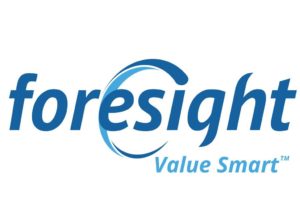 For two decades, companies that buy software patents to sue technology giants have been the scourge of Silicon Valley. Reviled as patent trolls, they have attacked everything from Google’s online ads to Apple’s iPhone features, sometimes winning hundreds of millions of dollars.
For two decades, companies that buy software patents to sue technology giants have been the scourge of Silicon Valley. Reviled as patent trolls, they have attacked everything from Google’s online ads to Apple’s iPhone features, sometimes winning hundreds of millions of dollars.
But now the trolls are in retreat from the tech titans, interviews and data reviewed by Reuters show.
In the wake of several changes in U.S. law, which make it easier to challenge software patents, patent prices are plummeting, the number of court fights is down, and stock prices of many patent-holding companies have fallen. Some tech firms say they are punching up research budgets as legal costs shrink, while support for major patent reform is under fire as trolls get trounced.
“Their entire business model relies on intimidation, and that has lost its edge,” said Efrat Kasznik, president of intellectual property consulting firm Foresight Valuation Group. “If the patents are not enforceable in court anymore… the troll has no legs to stand on.”
Brokers who work with the patent acquisition companies acknowledge the new climate.
“In some cases, there are just no current buyers for these patents at all,” said Robert Aronoff, founder of the patent brokerage Pluritas, citing new legal standards for the change.
NetApp a Silicon Valley maker of sophisticated data storage devices, last month used a new legal precedent to force a patent holder to pay its legal fees. The judge called the case “reckless and wasteful.”
The new playing field allows NetApp to spend more on developing its own patents, as opposed to litigation defense. “It is freeing up dollars,” said Douglas Luftman, NetApp’s chief intellectual property counsel.
To be sure, not all litigious patent owning companies are losing ground. Some with court-tested patents are doing well. And not all big tech companies are convinced of the change.
Cisco Systems Inc. has been at the forefront of the fight against infringement lawsuits and has not seen a drop in new suits in recent months, said General Counsel Mark Chandler.
Cisco will continue to push for laws to stop warrantless lawsuits, Chandler said. Others see the need diminishing.
THE BIRTH OF TROLLS
Big tech companies distinguish between their own intellectual property, which they fiercely protect, and those of their adversaries, which they often dismiss as broadly worded and vague, allowing holders to sue all manner of defendants. The big tech companies note that the patent acquisition companies they label as trolls generally make no products but are solely in the business of buying patents and litigating to enforce them.
The putative trolls see a different world. They buy patents from inventors and each other, creating a marketplace that checks big tech companies’ sway, and rely ultimately on a fair arbiter: courts. This can provide vital protection for investors’ ideas, said Matt Vella, CEO of Acacia Research Corp, which contracts with owners to license their patents to other companies. “I see it as a Robin Hood function,” he said.
If the so-called trolls had a birth date, it would be the summer of 1994, when a federal appeals court explicitly allowed computer program patents for the first time.
In the ensuing years, software patents exploded, covering topics from Wi-Fi to one-click shopping. So did patent lawsuits. Last year, more than 6,000 patent suits were filed, according to intellectual property analytics firm Lex Machina. A 2013 White House report said “trolls” were responsible for 60 percent of suits, up from 29 percent in 2010.
Congress struck the first blow against these high-volume plaintiffs in an overhaul of the patent system. Starting in 2012, companies accused of infringement could ask the U.S. Patent and Trademark Office to invalidate patents used in litigation. The reviews are much cheaper and faster than court.
The reviews proved popular — and devastating for many patent owners. As of June, the patent office was invalidating some or all of challenged patents’ claims at a rate of 80 to 90 percent, depending on the type of review.
Then, in June of this year, the Supreme Court unanimously ruled that a basic idea — not normally eligible for a patent — does not become patent-worthy if run on a computer. That case, Alice vs. CLS Bank, has made it easier still to quash software patents, and at least 13 lower court rulings since then have done just that.
MOUNTING EVIDENCE
New federal patent lawsuits last month were down 40 percent from the previous year, to 329 cases, data from Lex Machina show.
Defendants are also fighting longer, driving up costs for the acquisition companies. In 2004, the median time it took for a case that didn’t settle was 467 days. By 2013, that had reached 673 days, according to Lex Machina.
Intellectual Ventures, one of the largest private patent buyers, laid off over 20 percent of its workforce this year. The company began with backing from big tech companies who saw it as an ally, but some longtime investors including Apple and Intel declined to participate in its latest funding round. Intellectual Ventures declined to comment.
A survey of private patent deals compiled by brokerage IPOfferings, found the average price of a patent was $165,000 in the second quarter of 2014, down from $375,000 in 2012.
Some patents have withstood challenges under the new legal rules, however. Marathon Patent Group announced last month that the U.S. government rejected a request by ARM Holdings to invalidate a Marathon patent. Marathon is trading up 28 percent since mid-June.
Michael Friedman, managing director at IP strategy firm Ocean Tomo, said patents on widely used technology owned by companies like IBM, Microsoft and Qualcomm, are still in a strong position to seek licenses.
But some companies whose business model depends on successful litigation have seen their stock slide since Alice, the 2014 Supreme Court case. InterDigital has fallen over 5 percent and Acacia Research Corp is down over 9 percent. (See graphic: link.reuters.com/rej23w)
Just three weeks after Alice was decided, an Acacia Research subsidiary felt its reach when a federal appeals court backed the revocation of a patent on digital image processing, used to sue over 30 tech firms.
Acacia is appealing and said that in general, its other patents will not be impacted by Alice in the same way, since few deal with the kinds of software methods Alice puts at risk.
Still, Vella, Acacia’s CEO, said, said his company sensed the changing legal landscape and is shifting its strategy, away from one-patent cases to challenges based on several patents.
Article first Published on Reuters
